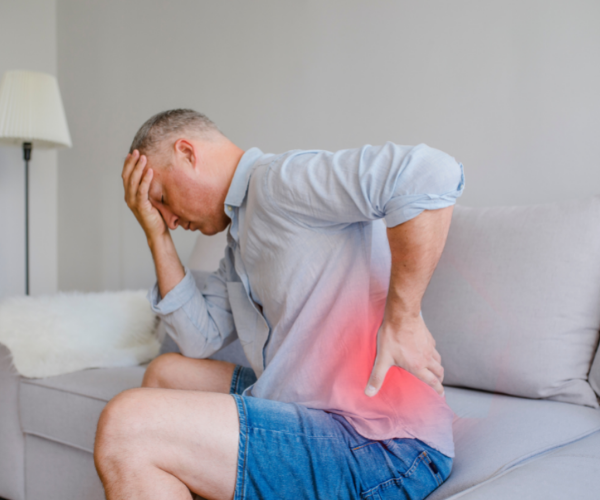What is Degenerative Disc Disease (DDD)?
Degenerative Disc Disease (DDD), sometimes also called osteoarthritis, occurs when the discs that separate the bones/vertebrae in your spine begin to wear away. This generally starts in adults around the age of 40 but can occur sooner depending on your activity/work/sporting pursuits.

Different stages of Degenerative Disc Disease
- Phase I: This stage may go unnoticed; however, it typically begins by a loss of normal curvature in the spine. At this stage there may be some minor discomfort but generally speaking there is minimal pain associated with this stage.
- Phase II: At this stage there will be further loss of disc height resulting in a more pronounced change in posture (loss of curvature in the spine) and pain. Research has shown that this occurs in 40% of men and women by the time they reach 40 years old and 80% by the time they reach 80 years old.
- Phase III: At this stage postural issues are exacerbated and other structural changes will start in the spine such as osteophytes (bone spurs) that can pinch the nerves as they exit the spine and cause pain radiating into the lower back and/or all the way down the legs.
- Phase IV: At this stage the discs are severely degraded and as a result spinal stenosis (pinching of the nerves) may cause excessive pain. As above, this may radiate down one or both legs. Spondylolisthesis (slipping of one vertebrae over another one) and severe inflammation/osteoarthritis are also common at this stage
How Did I Get a DDD?
As stated above, DDD is the result of gradual and progressive changes in the spine. This can be accelerated by trauma to the spine (motor vehicle accidents, falls, overuse in your occupation). This is common, affecting 4 out of 5 people by the time they reach 80 years old.




Symptoms ofDegenerative Disc Disease
Symptoms of DDD may include, but are not limited to:
- Pain in the lower back, buttocks and/or upper thighs.
- The pain can come and go depending on activity and positions.
- The pain will feel worse when you bend, move, lift or twist.
- In extreme cases there may also be numbness and tingling down the legs.
- Pain improves when you lie down.
How is Degenerative Disc Disease Diagnosed?
In Ontario it is often diagnosed on simple X-ray but an MRI may be used for a more complete, three dimensional view.
Treatment options for Degenerative Disc Disease
The goals of treatment for degenerative changes are often different from other locations of the body. Unfortunately treatment will not reverse the degenerative changes in the spine; therefore, treatment must focus on improving the surrounding tissues/structures to take pressure off the aggravated bones and nerves. This is done through spinal/core strengthening programs, spinal mobilization to open up the joint space, stretching tight structures to improve range of motion, slowly resuming regular activities and decreasing pain with modalities such as acupuncture, hot packs, traction, ice packs and others.


Is Surgery an option for DDD?
In extreme circumstances surgeons may consider a lumbar spinal fusion. As with all surgery, this is considered a last result and will typically only be explored after other less invasive treatments such as physiotherapy have been trialed. An alternate surgical option is replacement of the lumbar disc with an artificial disc. This surgery is rarely done in Canada.


